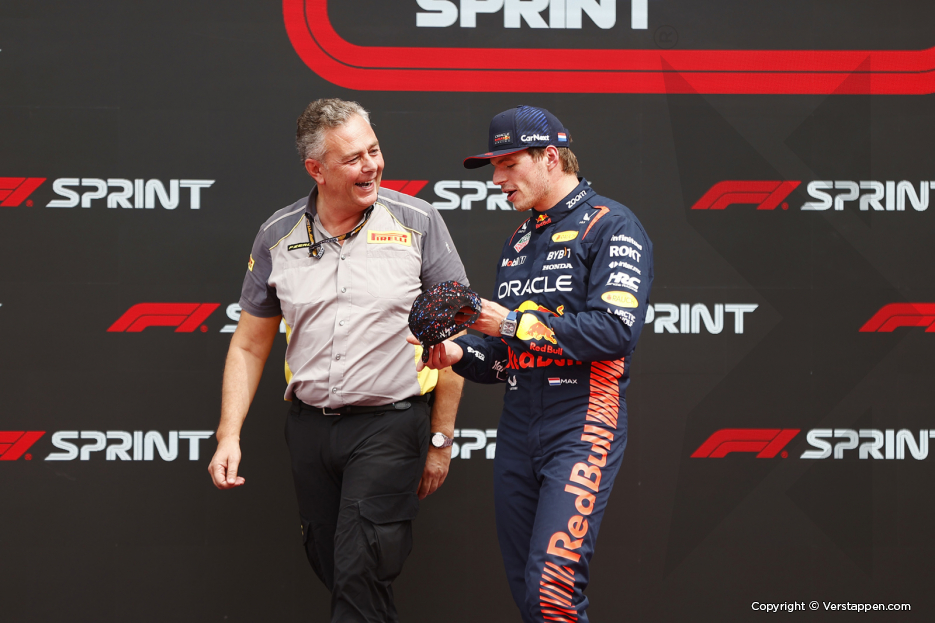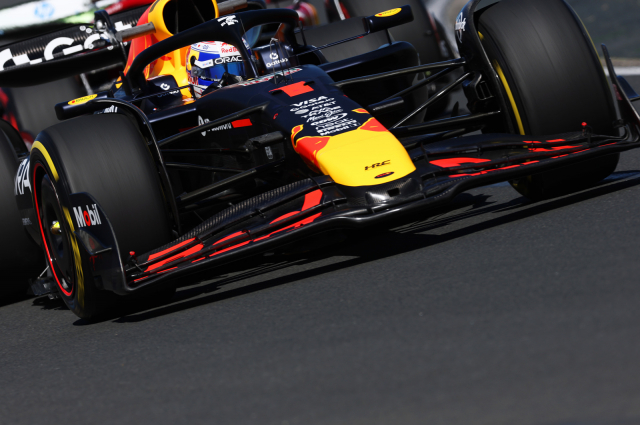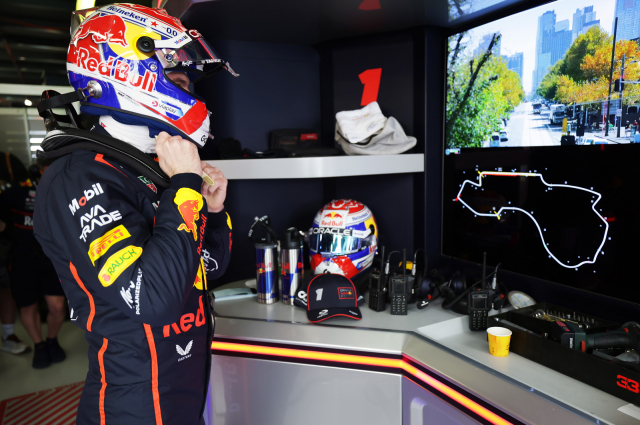Pirelli, the eleventh team on the grid: 'We don't fight for victories like Max'
Published on 23 January 2024 by FORMULE 1 Magazine
This article previously appeared in FORMULE 1 Magazine, on pole for thirty years! For more news on Max Verstappen and Formula 1, visit Formule1.nl.
Author: Gerard Bos
It’s timeless: the discussion about tyres. Despite the criticism, Pirelli is proud to be a supplier to Formula 1. A look behind the scenes at the ‘eleventh team’ in the paddock. “We don’t think in terms of problems.”
Putting things into perspective. Mario Isola can do it like no other. “That’s right”, says a voice in the Pirelli hospitality, waiting for an espresso. Then, with a grin: “Luckily I can do that, it helps in this world.”
As Racing Manager of the tyre manufacturer of Formula 1, Isola is confronted with problems or challenges of a sporting nature at all times. The stakes are high (and diverse). Isola and his team say that they do everything they can to satisfy the teams and drivers, while contributing to the entertainment value of the sport. And that all, of course, in a safe way to prevent any disasters.
With these tasks, it doesn’t help if you get driven crazy easily. And Isola, a 53-year-old from Milan, doesn’t let that happen. When the corona pandemic takes over the world in 2020, not least his beloved Italy, he decides to become a medical volunteer. No tyres, Formula 1 and sporting competition, but a completely different battle: that of life and death.
The fact that Isola took that step shows his commitment and helpfulness. The pandemic was contained, but those two qualities of the Italian man obviously did not disappear. They serve him now at a completely different level in his role in Formula 1. Just like the ability to put things into perspective. As Pirelli’s Racing Manager stress is a big factor of your job, you’d say. But Isola has faced hotter fires during the pandemic. That realisation also helped him last year in Qatar.
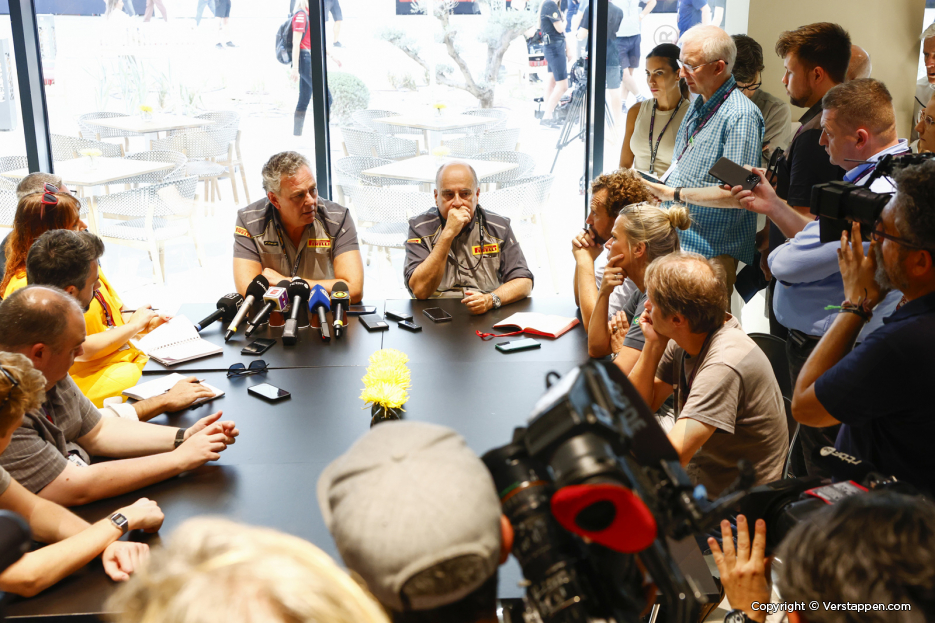 Qatar, 7 October 2023
Qatar, 7 October 2023
Welcome to the Losail International Circuit. It’s the day on which Max Verstappen secures his third world title in the late Qatar evening. But also the day that starts with ringing and vibrating phones from F1 journalists. Some of the reporters are early in the paddock, the rest get woken up by their phones after a long Friday evening. It’s raining email, text and Whatsapp notifications. The big news: Pirelli is sounding the alarm.
Why? The tyres have major problems with the curbs in Qatar. The problems are so big that safety is at risk. In the paddock it’s all hands on deck for Isola and his team. There must come a solution to the sudden tyre problem. And fast too.
You would expect him to talk to the international media with sweat on his brows. If not for the problems with the tyres or the uncertainty of what to do next, then because the temperatures have already risen to no less than 40 (!) degrees at six minutes past nine in the morning. But no matter how oppressive the circumstances, Isola remains calm. There is no question of a stressed Italian gasping for breath.
“We think in solutions”, he says. Or as they would probably say in his home country: Pensare in soluzioni.
There will first be some adjustments to the track, followed by a small practice session prior to the sprint shootout. And the next day, it is decided that a maximum number of laps can be driven on one set of tyres. It means three mandatory pit stops in the Sunday race. Everything went well with the tyres, and the Saturday evening in Qatar is mainly about the unprecedented success of Verstappen, followed by talks about the intense heat that caused many drivers to vomit or even faint on Sunday evening.
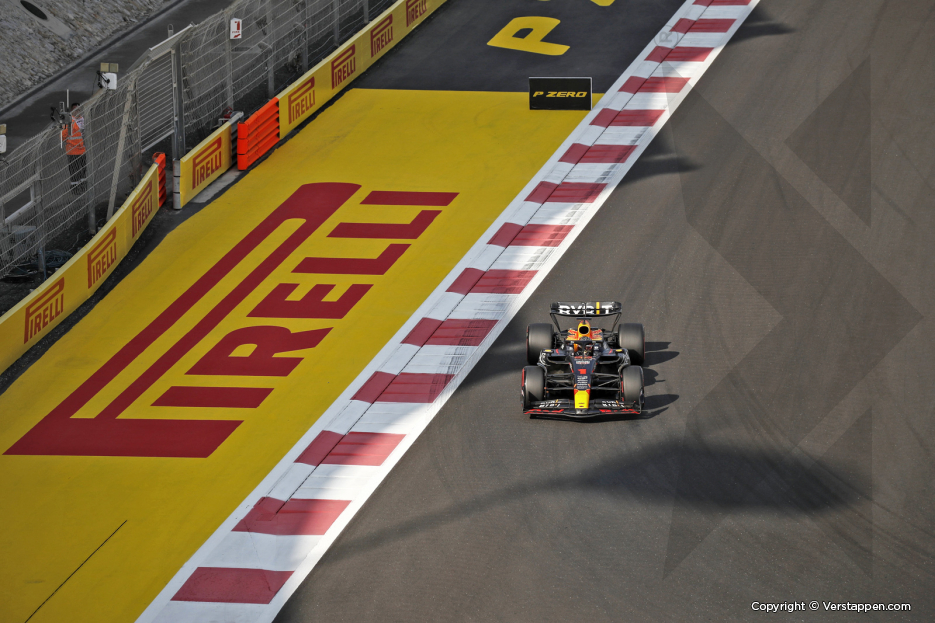 However, that weekend showed once again how crucial tyres are for the smooth running of the sport, and how great the responsibility is to make sure that the tyres are safe.
However, that weekend showed once again how crucial tyres are for the smooth running of the sport, and how great the responsibility is to make sure that the tyres are safe.
“And safety is a priority for us”, Isola emphasises when we meet him on Friday. “We want to work in a reliable and sustainable manner. And thus supply tyres that naturally suit the fast and sportive competition that is Formula 1. Tyres also contribute to the show.”
Does that mean that everyone is always happy with Pirelli? Unfortunately for the Italians, no. It’s also almost impossible to make everyone happy: ten teams, each with their own arsenal of staff, with team bosses, with two drivers. The FIA. The FOM. In short, many different parties with different interests. Mario Isola knows that he cannot always please everyone. “There are always people that are not happy.” With a smile he adds: “They usually belong to the teams that didn’t win.”
Being the tyre supplier tends to be a thankless task. It reminds us of referees, teachers, judges, jury members and so on. In other words: independent minds who, based on their knowledge, experience, reasoning or insights, have to draw conclusions, take decisions or make recommendations. Only to conclude that they can never get it right, no matter how well-intentioned.
Isola: “I understand the comparison, but we don’t see it that way. For us, as partner of Formula 1, the challenge is to do justice to the priorities of the sport - and therefore also ours. If we deliver good tyres during a Grand Prix, which help the sport and show, and do this in a safe manner, then our weekend is a success. It is wonderful to pursue this goal together. We’ve been trying to do that for years.”
With a little imagination you could even call Pirelli the eleventh team in Formula 1. Just think about it: they have their own engineers, own colours, own hospitality and a remote headquarters. “Only the cars and the drivers are missing”, Isola laughs.
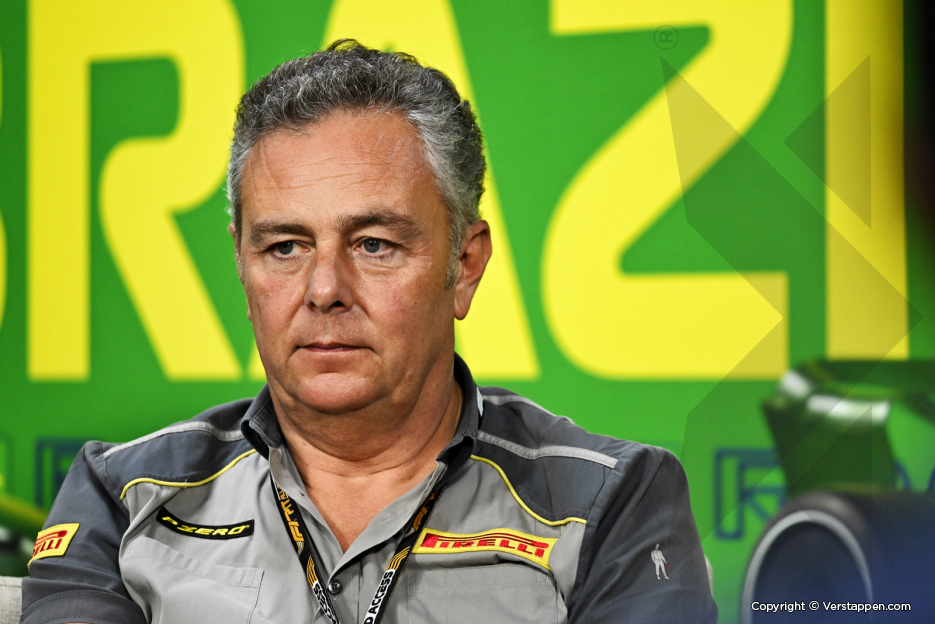 Monaco, 26 May 2023
Monaco, 26 May 2023
Let’s take a few steps back in time, to Monaco, at the end of May. Formula 1 is one of the things the principality is famous for, and it’s a place of see and being seen amidst all the splendour. At several GP’s this year it’s noticeable that many visitors in the paddock stop for a moment in front of the Pirelli hospitality. That’s not without a reason, and it’s no different in Monaco. Many people are already amazed there, but also because of the three tyres that are always on display in front of the Italian accommodation. An impression of a conversation between two Dutch fans:
“Those aren’t real ones.”
“Well… are you sure?”
“No man, that’s not possible. Look how big they are.”
“They are 18-inch, remember. And that’s only the rim. Then you still need to add the tyre.”
“In that case they must be real, indeed. But they’re still abnormally large, I never noticed that when watching it on TV from the couch.”
As the two continue their way, disbelief resonates about the size of the Formula 1 tyres. And they’re not wrong: from up close the tyres are indeed colossal things. This also becomes clear in the pit lane. As always, the tyres are driven into the pits in Monaco on carts. But as Monaco is a street circuit, this has to be done via a bridge.
With eight tyres on a cart, engineers enter an elevator, with cart and all. On the way to that elevator, they have to push the cart a few meters slightly uphill. Cheered on by the “lucky few” that have a ticket with a seat with a view of the pit lane, the strong and well trained mechanics managed to push the cart uphill. “Big?” One of McLaren’s engineers repeats the observation that the tyres are larger than they appear on TV. He smiles, “and heavy!”. They are indeed. Four tyres including rims reportedly weigh around 80 kilos.
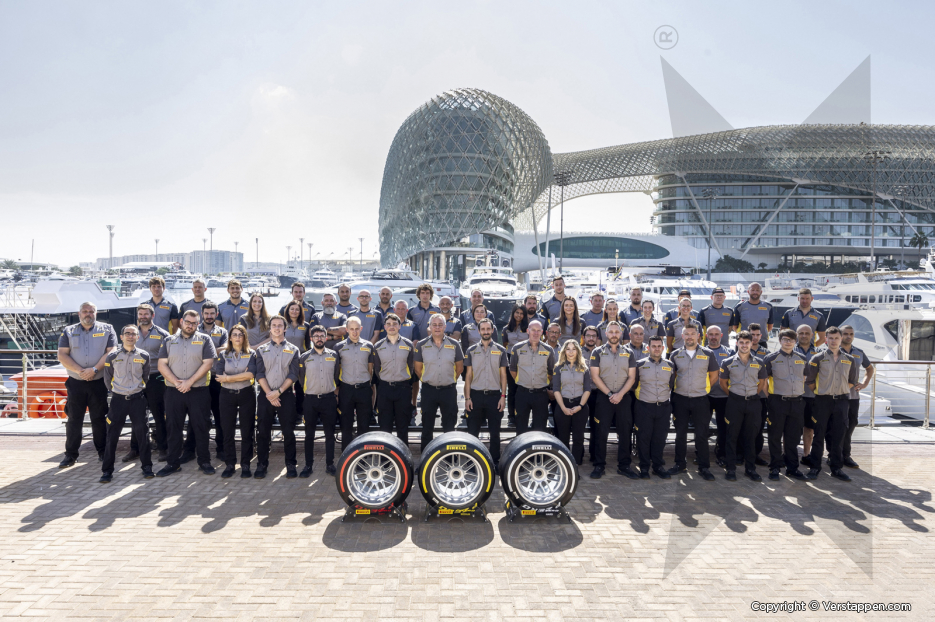 Qatar, 5 October 2023
Qatar, 5 October 2023
Back to the Losail International Circuit, the Grand Prix of Qatar. On Thursday afternoon, before even a meter has been driven, Simone Berra cannot suppress a smile when he hears about the interesting conversation of the two surprised Dutchmen in Monaco. For Berra himself it’s only normal: as chief engineer of Pirelli, he has seen thousands of tyres up close.
Berra is one of the many Pirelli employees wearing the characteristic grey-yellow-black clothing who can be found with one of the teams, on the grid or measuring and investigating when appearing on camera. In his position, Berra is responsible for all the decisions regarding the sporting and technical side of the tyre use in the run-up to, and during a race weekend.
Like no other, he can explain how Pirelli organises things. “I manage ten so-called trackside engineers, each of them is linked to one of the F1 teams. They support that team when it comes to tyres: from management to behaviour to values. Based on their findings, I stay in contact with the teams to discuss the performances and characteristics.”
On the other hand, there is the contact with the FIA and FOM. Berra continues: “I’m a point of contact for those parties, they look at the tyres from an organisation and safety perspective. I inform them about the compounds for the weekends, their allocations, tyre wear and answer any other question they might have about the performance or behaviour of the tyres.”
However, that’s not the only thing. As Isola already said, Pirelli is a bit like a ‘real’ F1 team. Because as a racing team collects feedback about the performance of the car and shares it with the factory, Pirelli does the same thing with the performance of the tyres. “And just like the teams, we already do that during the weekend”, Berra explains.
“I collect all the information and feedback from the trackside engineers,” he continues, “and make sure that it ends up at our headquarters in Milan. The people there then have an overview of all aspects related to the tyres during and after the weekend: temperatures, wear, behaviour. That’s important, we analyse everything after the race in order to use it and improve in the future. That’s how we continue to develop the tyres and make them safe and good.”
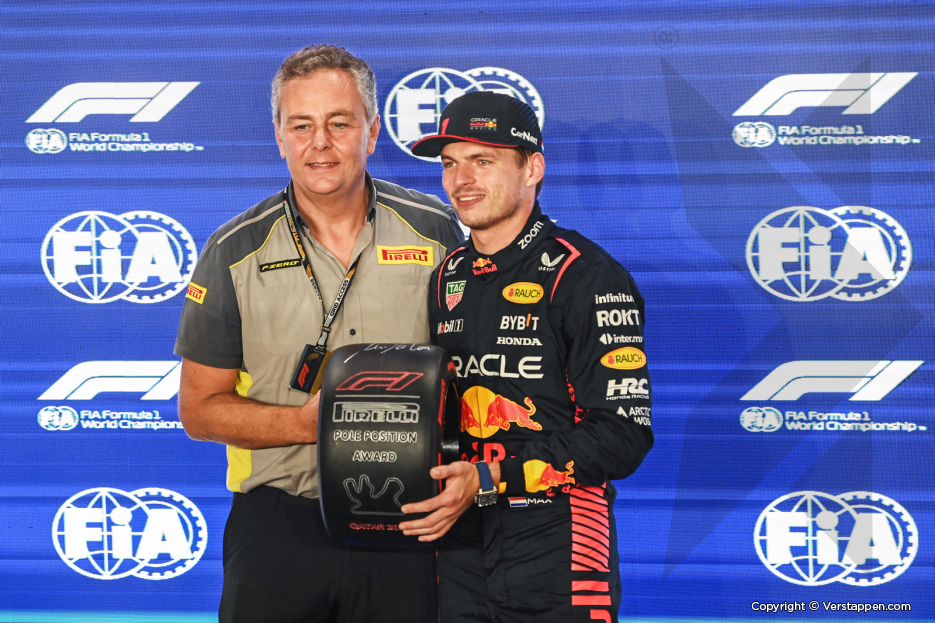 It also explains why Pirelli can act so quickly in Qatar when, after the first day, it becomes clear that something is wrong with the tyres. Or better said: with the combinations of the rubber and the abnormally high curb stones of the circuit. Turns out that the worried expressions on the faces of the men and women in Pirelli teamwear aren’t because of the extreme high temperatures. But because of what they observe and what they measure (and therefore what they know).
It also explains why Pirelli can act so quickly in Qatar when, after the first day, it becomes clear that something is wrong with the tyres. Or better said: with the combinations of the rubber and the abnormally high curb stones of the circuit. Turns out that the worried expressions on the faces of the men and women in Pirelli teamwear aren’t because of the extreme high temperatures. But because of what they observe and what they measure (and therefore what they know).
Berra: “Just like a Formula 1 team, we also have briefings after every session and at the end of every day. In those briefings we discuss everything we have seen, heard, noticed and measured. It’s not like we supply a few tyres, and can then relax and have the teams figure it out.”
Scenarios are also being worked on extensively prior to every Grand Prix weekend. “It’s nice when things go as we expected and thought of in advance”, he says. But in Qatar, the circumstances turn out to be very different from what they had predicted. That can happen, according to the Italian you simply cannot predict everything. “Based on our analyses, we can determine what a tyre will do in combination with the cars, the conditions on and off track [such as weather, temperature, etc.]. Unfortunately, there are no guarantees, but we always aim for correct analyses and good cooperation with the teams. Such things all contribute to a good weekend for the sport. And therefore for us.”
On Sunday evening, when the focus is mainly on the heat and its physical consequences, we see a smiling Berra walking through the paddock. A little further away, Isola eagerly and enthusiastically shakes a few hands. The couple experienced a few setbacks with Pirelli in Qatar, but they didn’t lose their minds. Put things into perspective, as we learned from Isola’s medical aid adventure. And the search for a solution turned out to be successful.
Berra, in conclusion: “As Pirelli, we don’t fight for victories, like Max Verstappen and the other drivers do. But every time we deliver good and safe tyres, that’s a victory for us. That’s what we do it for. And when things go wrong, we don’t give up.”
So think in solutions. Pensare in soluzioni, perhaps we see it soon on a tile on the wall of Pirelli’s hospitality.

